Learn whether or not you can substitute olive oil for butter when making a roux. Great to know when you have run out of butter but want to make a sauce.
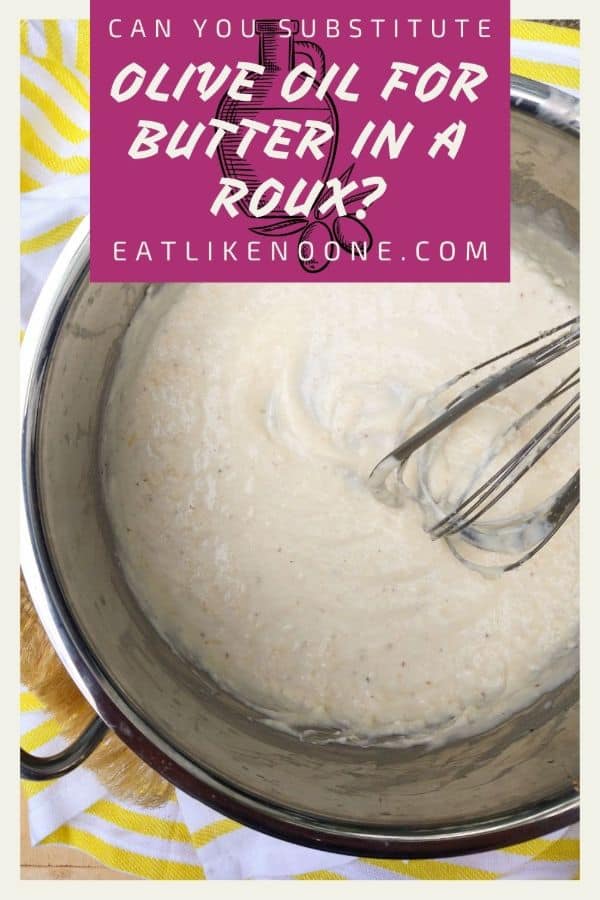
This post includes affiliate links. This means that, at no additional cost to you, I will earn a commission if you click through and make a purchase. These are products and services I recommend because I use or trust them. Cookies will be used to track the affiliate links you click.
Isn't it super annoying when you are about to make a recipe and you realize you are missing just one ingredient.
Sometimes that one ingredient can be key and you can't really do the recipe without it - you can't make a chicken parmesan without chicken!
In most cases I think a substitute can be made. It's learning the amount you need to use, what effect it will have on cooking the dish, and how it will impact the final flavor.
Today, we are going to look at the situation in which you need to make a roux to make a sauce and realize that you are without butter. Is olive oil a good replacement?
Jump to:
❔ Does Olive Oil Make a Good Roux?
The quick answer is yes. Combining olive oil and flour will work for successfully thickening your sauce.
I never thought of making a roux with anything but butter. That was until I was down in New Orleans, and I learned about gumbo making. Typically gumbo is made using a roux of flour and oil, not butter. That roux is a dark roux is cooked for a long time until it's very dark red or brown.
You can use whatever olive oil you have on hand including extra virgin. I don't think you need an oil with a higher smoke point (like vegetable oil) as you don't want your burner set to anything higher than medium heat. It's easy to burn a roux if your heat is too high.
Sometimes you might want to just sub olive oil for butter if your sauce is already a dairy-heavy sauce.
When your roux recipe calls for butter, you can substitute olive oil at a 1:1 ratio.
❓ Does It Taste Like Olive Oil?
Not really. When olive oil is cooked, I find that the fruity notes are diminished.
I don't think you should use olive oil just for the flavor. If you want that flavor drizzle a little bit on top of your dish.
💡 Tip - Don't have any olive oil either? You can use an animal fat to make a roux as well. I once used leftover bacon grease for my mac & cheese when I was out of butter and it made for some good mac & cheese with a smoky flavor.
🥣 Béchamel Sauce
Unlike gumbo, béchamel is made from a light roux or white roux. It will thicken better and produce a lighter colored sauce. Most of the time when I am making a béchamel sauce it is the base for mac & cheese. I make the sauce, then add in shredded sharp cheddar cheese at the end.
When I do make mac & cheese I like to make more of a blonde roux. This adds a little more nutty flavor but you do need more of it, as it's thickening power is a little less.
Below you will a recipe for a light béchamel sauce with olive oil that has some parmesan and nutmeg added to it. It's a simple easy sauce to make.
🛒 Ingredients
Here is what you will need to make a simple olive oil based Béchamel.
- Extra virgin olive oil
- All purpose flour
- Whole milk
- Kosher salt
- Freshly cracked white pepper
- Grated whole nutmeg
- Parmesan cheese
If you haven't tried nutmeg in a savor dish before, you need to. It's good for more than baking with at Christmas time. It's really good on asparagus.
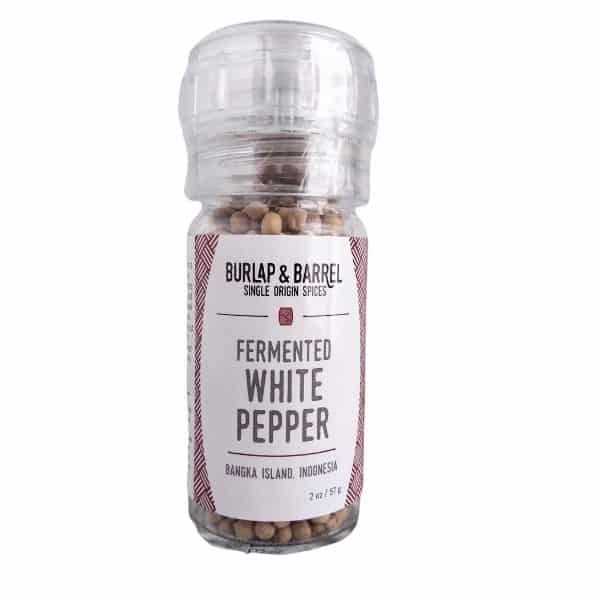
I also like using white pepper for this dish instead of black, because then you don't have black specks in your sauce. Plus I like the flavor of Burlap & Barrel's Fermented White Peppercorns.
📖 RELATED - Cooking with Olive Oil vs. Vegetable Oil
📋 Instructions
Here are step by step instructions.
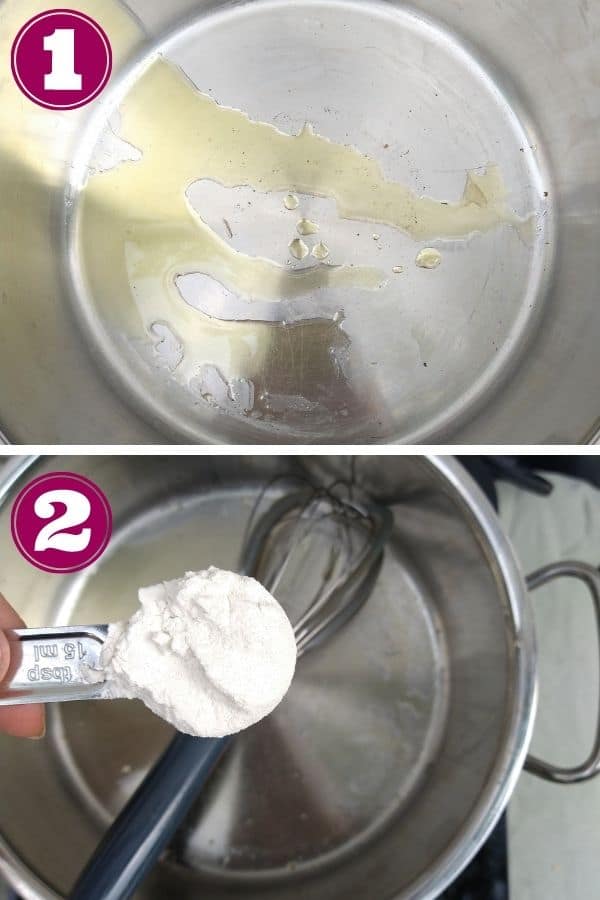
Start by adding the olive oil to the pot over medium heat. I like to use a large pot so that I have plenty of space to stir without splattering. And when the milk eventually starts to boil, it can easily boil over if you aren't looking.
Then add in the flour once the oil starts to shimmer.
🧮 Here is the ratio to use - 1 tablespoon flour to 1 tablespoon oil
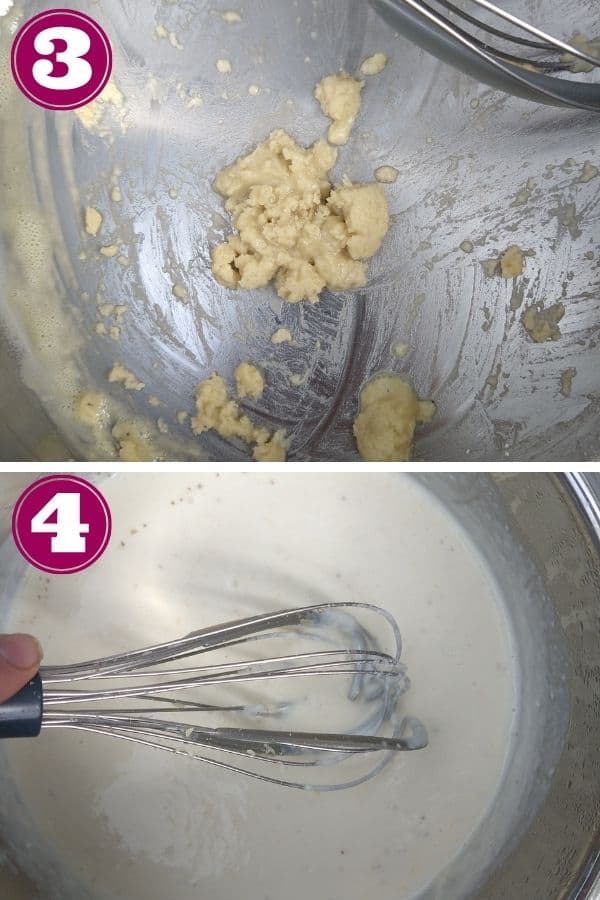
Stir the oil and flour until combined. Cook for about 20-30 seconds, stirring to keep it from sticking or burning. You want to just cook out the raw flour taste.
Add in about ¼ cup of the whole milk. Stir to mix in the flour/oil. Then add in the rest of the milk.
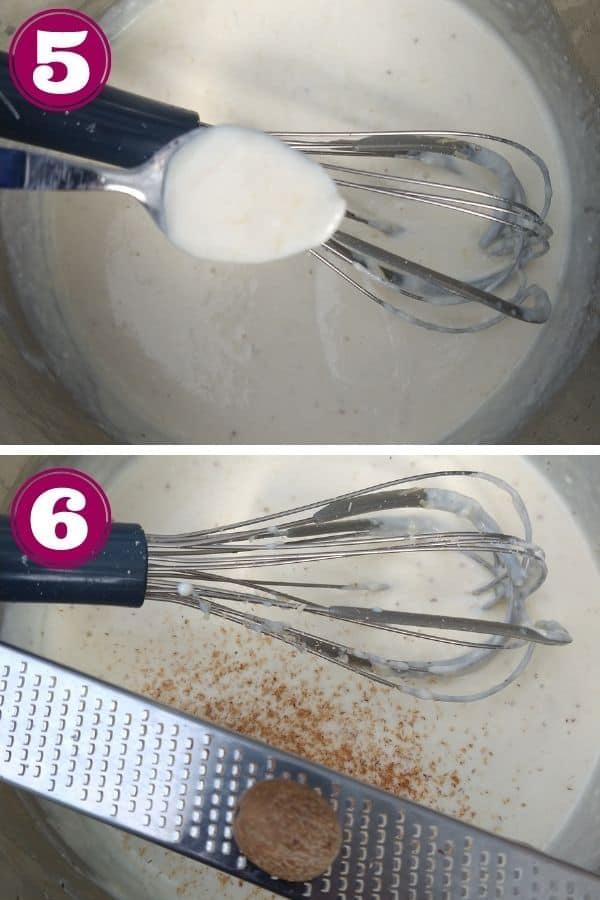
Cook until the milk comes to a just a boil. It should take 3-5 minutes. Don't let it boil over. Keep cooking until it is thick enough to coat the back of a spoon. The sauce will thicken up more as it cools. It may not look thick enough at first, but trust me it will work.
Now add in the Parmesan cheese, pepper, and salt. I grate the nutmeg with a Microplane Zester directly over the pot.
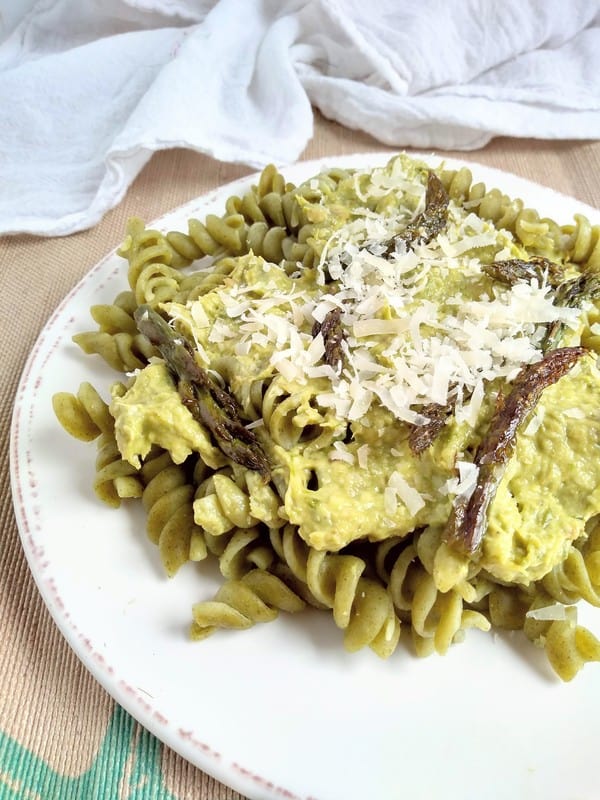
👨🍳 Other Sauces to Try
Here are some other sauces from my blog you'll want to try out.
- Asparagus Pesto
- Spinach & Arugula Pesto
- Pumpkin Spaghetti Sauce
- Pumpkin Pasta Sauce
- Mustard Sauce for Beef
- Basil Alfredo Sauce
- Cacio e Pepe

Olive Oil Béchamel Sauce
Ingredients
- 1 tbsp extra virgin olive oil
- 1 tbsp all purpose flour
- 2 cups whole milk
- ¼ cup Parmesan cheese shredded
- ½ tsp freshly grated nutmeg
- kosher salt to taste
- freshly cracked white pepper to taste
Instructions
- Set a pot over medium heat. Add the olive oil.
- When it starts to shimmer, then add in the flour. Whisk to combine. Allow to cook for about 30 seconds, stirring constantly.
- Add in ¼ cup of the milk. Mix to combine.
- Add in the remaining 1 ¾ cups of milk. Stir to combine.
- Bring to a boil and cook until the sauce coats the back of a spoon.
- Remove from the heat.
- Stir in the parmesan cheese. Grate the nutmeg into the pot.
- Add kosher salt and white pepper to taste.
- Serve with your favorite pasta.


Tom
This is exactly the recioe I am looking for, thank you.
But it sounds like really fancy mac and cheese,
which is what I wanted.
Eric Samuelson
You are welcome. I am glad you found what you were looking for and feel free to call it a fancy mac & cheese!